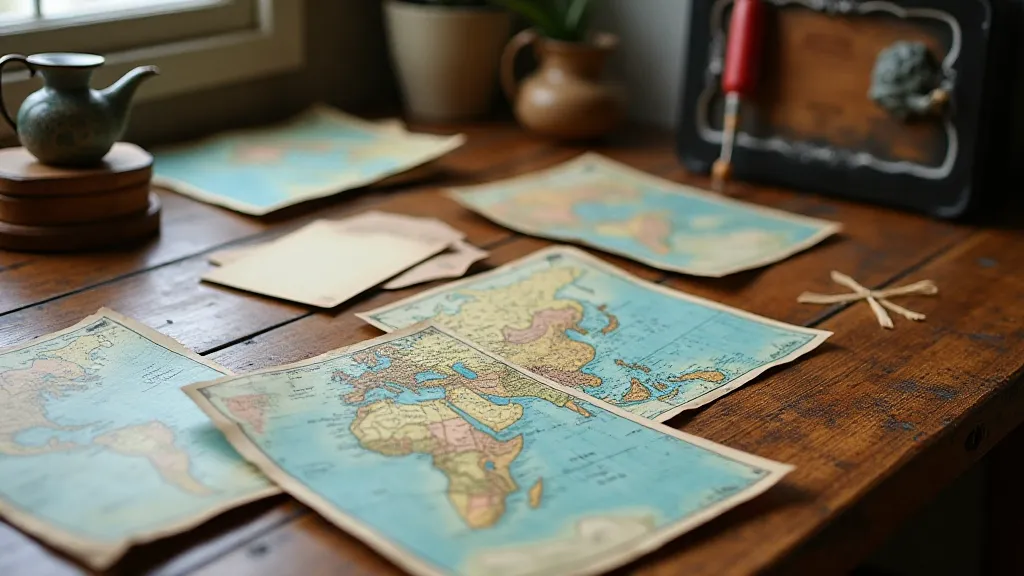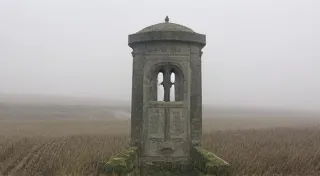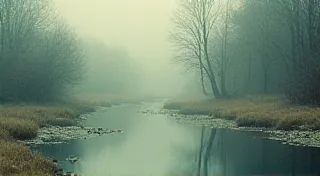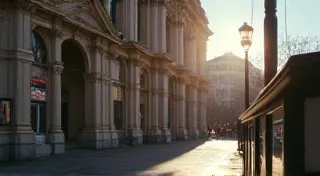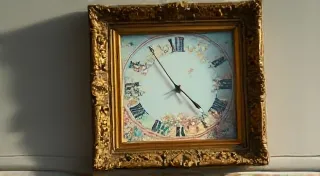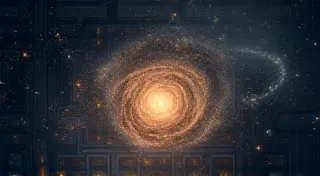The Cartographer's Dream: Reinterpreting Distorted Postcard Maps of Imaginary Lands
There's a peculiar magic held within vintage postcards. Beyond the sepia-toned images of bustling city squares and serene coastal scenes, lies a more whimsical, often overlooked category: postcards featuring maps. But not just any maps. These are the fantastical, exaggerated, and sometimes utterly nonsensical cartographic dreams pressed between cardboard, remnants of a bygone era when the world was ripe for reinterpretation and escapism. Collecting them isn't merely about acquiring pretty pictures; it's about unlocking a window into the collective human desire to reimagine our place within a larger, more wondrous universe.
My fascination began years ago, in a dusty antique shop tucked away in a forgotten corner of my hometown. Amidst chipped teacups and yellowed lace, I stumbled upon a postcard depicting what appeared to be a sprawling archipelago labeled "The Isles of Nevermore." The continents were oddly shaped, peppered with whimsical place names like "Whispering Cliffs" and "Dragon's Tooth Peak." It wasn't a map of anywhere real. It was a dream materialized, a cartographer's playful rebellion against the rigidity of geographical accuracy.
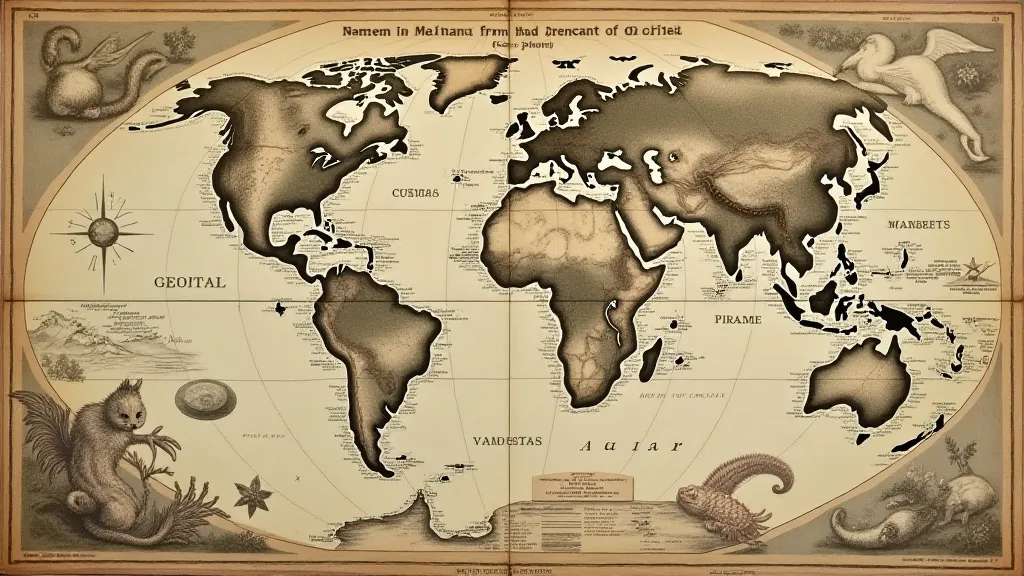
A History Etched in Ink and Imagination
The late 19th and early 20th centuries were a golden age for this unique form of postcard art. The rise of the postcard itself, fueled by advancements in printing and postal systems, coincided with a burgeoning interest in exploration, travel, and exotic locales. While many postcards depicted real places, the limitations of the medium – size, printing costs – encouraged creative license. Cartographers, or those claiming to be, weren't bound by scientific accuracy; they were storytellers using geography as their canvas.
These "maps" served various purposes. Some were purely decorative, intended to spark the imagination of the sender and receiver. Others were marketing tools, designed to promote tourist destinations by portraying them as more enchanting than reality. Still others, undoubtedly, were simply the product of an artist's whimsical fancy, a chance to indulge in a bit of playful deception.
Consider the influence of earlier illustrated maps – the fanciful portrayals of the Americas in medieval cartography, where sea monsters and mythical lands populated unexplored regions. These traditions persisted, finding a new outlet in the burgeoning postcard industry. There was a genuine appetite for the fantastical, a yearning for places beyond the everyday grind.
The Craftsmanship of Illusion
What's truly remarkable is the artistry involved. While mass production existed, many of these postcards were hand-drawn or lithographed, showcasing a level of detail and craftsmanship often missing in modern, digitally-printed materials. Notice the delicate linework, the careful shading, the imaginative placement of landmarks. Each postcard is a testament to the artist's skill and vision.
Look closely at the legends and place names. Many are deliberately ambiguous or humorous, adding to the overall sense of absurdity and charm. The typography itself can be a delight, often employing elaborate fonts and decorative flourishes. It's a holistic design, where every element contributes to the creation of a believable – or wonderfully unbelievable – world.
More Than Just Geography: A Reflection of Escapism
Beyond the aesthetic appeal, these postcards offer a fascinating glimpse into the collective anxieties and aspirations of a generation. The early 20th century was a time of great social and political upheaval – wars, industrialization, rapid urbanization. These fantastical maps, in a way, offered an escape from the harsh realities of life. They were invitations to dream, to imagine a world where adventure awaited around every corner, and where the rules of geography could be bent to one's will.
The distortion wasn't simply about playful exaggeration; it was a psychological maneuver. By reinterpreting the familiar landscape, these artists were subtly challenging the constraints of reality. They were offering a sense of control, a feeling that even in a world seemingly beyond one’s grasp, a little imagination could reshape everything.
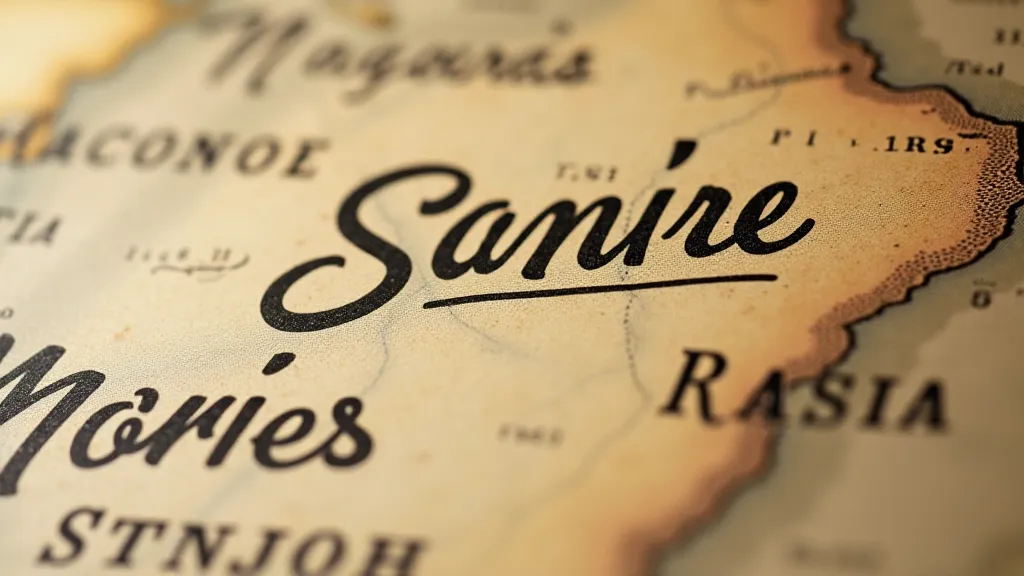
Collecting and Caring for These Treasures
Collecting these unusual postcards isn’t about completeness or rarity (although rare examples do exist). It’s about curating a collection of dreams, a testament to the power of imagination. Some collectors focus on specific themes – maps of fictional countries, depictions of mythical creatures, or postcards from particular eras. Others simply appreciate the beauty and charm of the artwork itself.
As with any vintage collectible, proper care is essential. These postcards are delicate and susceptible to damage from light, moisture, and handling. Store them in acid-free sleeves or albums, away from direct sunlight and extreme temperatures. Avoid excessive handling, and be gentle when cleaning – a soft brush or a slightly damp cloth are usually sufficient.
Restoration is a tricky business. While some minor repairs, like reattaching a torn corner, may be possible, it's generally best to leave the postcard in its original condition, imperfections and all. Those imperfections are part of its history, a testament to its journey through time.
The Enduring Appeal of Distorted Dreams
The fascination with these distorted postcard maps persists even today. In a world increasingly dominated by digital images and hyper-realistic representations, there's something refreshing about a piece of art that embraces imperfection, celebrates imagination, and invites us to question the very nature of reality. They remind us that the most beautiful landscapes aren't always found on a map, but within the boundless reaches of the human spirit.
The next time you encounter a vintage postcard depicting a strangely shaped continent or a fanciful archipelago, take a moment to appreciate the artistry and the story it holds. It's a window into a bygone era, a testament to the enduring power of dreams, and a reminder that even in a world bound by geography, the possibilities for exploration are truly limitless.
